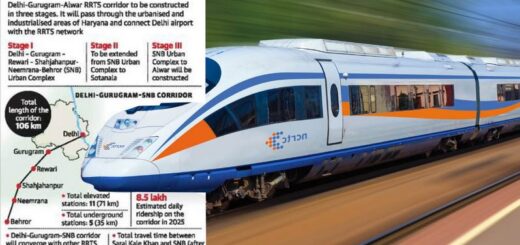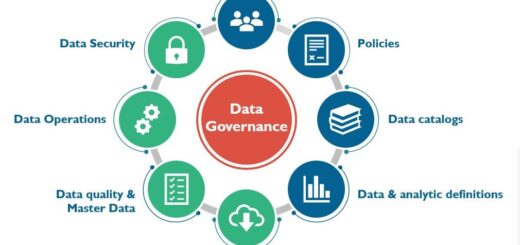National Current Affairs – UPSC/KAS Exams- 1st January 2020
National Infrastructure Pipeline
Topic: Economy
In News: Union finance minister Nirmala Sitharaman unveiled Rs 102 lakh crore of infrastructure projects, under National Infrastructure Pipeline.
More on the Topic:
- It is estimated that India would need to spend $4.5 trillion on infrastructure by 2030 to sustain its growth rate. The endeavour of the National Infrastructure Pipeline (NIP), is to make this happen in an efficient manner.
- NIP will enable a forward outlook on infrastructure projects which will create jobs, improve ease of living, and provide equitable access to infrastructure for all, thereby making growth more inclusive.
- During the fiscals 2020 to 2025, sectors such as Energy (24%), Roads (19%), Urban (16%), and Railways (13%) amount to around 70% of the projected capital expenditure in infrastructure in India.
- It has outlined plans to invest more than ₹102 lakh crore on infrastructure projects by 2024-25, with the Centre, States and the private sector to share the capital expenditure in a 39:39:22 formula.
What are key benefits of National Infrastructure Pipeline?
- Economy: Well-planned NIP will enable more infra projects, grow businesses, create jobs, improve ease of living, and provide equitable access to infrastructure for all, making growth more inclusive.
- Government: Well developed infrastructure enhances the level of economic activity, creates additional fiscal space by increasing revenue base of the government and ensures quality of expenditure focussed in productive areas.
- Developers: Provides better view of project supply, provides time to be better prepared for project bidding, educes aggressive bids/ failure in project delivery, ensure enhanced access to sources of finance as result of increased investor confidence.
- Banks/financial institutions (F1s)/investors: Builds investor confidence as identified projects are likely to be better prepared, exposures less likely to suffer stress given active project monitoring, thereby less likelihood of NPAs.
Source: Hindu
Topic: Environment and Ecology
In News: The 2019 report by Forest Survey of India (FSI) was released. It states that about 21.40% of forest cover in India is prone to fires, with forests in the north-eastern region and central India being the most vulnerable.
More on the Topic:
- FSI carried out a study along forest fire points (FFP) identified across the country from 2004 to 2017.
- There are total 2,77,758 FFP identified during the 13 years.
- FFPs were analysed using a moderate resolution imaging spectroradiometer (MODIS) by overlaying the points coverage over the grid coverage of 5 km x 5 km.
Statistics:
- Extremely fire-prone areas account for 3.89% of total forest cover, very highly fire-prone areas account for 6.01% and highly fire-prone areas for 11.50%. Together, the three categories come to 40 % of forest cover.
- From November 2018 to June 2019, there were total 29,547 alerts based on MODIS. Mizoram recorded the highest number of fire alerts (2,795).
- The north-eastern region accounted for about one-third of alerts in the country.

- The Central Indian States also recorded a high number of forest fire alerts.
- Alerts : Madhya Pradesh > Maharashtra > Odisha > Chhattisgarh
- The overall green cover has increased in the country but the forest cover in the north-east, particularly in Mizoram, Arunachal Pradesh and Nagaland, has decreased.
- The uncontrolled forest fires can lead to significant loss of forest cover. Climate change influences the frequency and intensity of forest fires and results in forests becoming increasingly inflammable.
Forest Fire- Causes:
- Thunderstorms are the most likely natural cause for forest fires.
- In central India, the reasons are mainly manmade, particularly in cases where people visit forests and leave burning bidis, cigarette stubs or other inflammable materials.
- A major reason for forest fires in the north-east is slash-and-burn cultivation, commonly called jhoom or jhum cultivation.
- The north-east has tropical evergreen forests which are not likely to catch fire easily on their own like the dry deciduous forests of central India.
Source: Hindu
Topic: Governance
In News: The Supreme Court of India held that the Government has no right to transfer “invaluable” community resources like village water ponds to powerful people and industrialists for commercialisation of the property.
More on the Topic:
- The common areas like water ponds and wells are the lifeline of village communities and often sustain various chores and provide resources necessary for life.
- It is necessary to protect village commons for safeguarding the fundamental right guaranteed by Article 21 of our Constitution.
Background:
- The judgment came on a plea against the transfer of village ponds’ sites of Saini village in the National Capital Region to some private industrialists by the Greater Noida Industrial Development Authority.
- The National Green Tribunal (NGT) refused to intervene on the plea but the apex court ordered the authorities and the industrialists to remove all obstructions and restore the water bodies within three months.
- SC said the State can not deprive the villagers of their existing source of water and other community resources even after the promise of providing them with an alternative source.
- There is no guarantee that the adverse effect of destroying the existing water body would be offset and people would be compelled to travel miles to access the alternative site.
| Community resources are the resources which are available for everyone’s use in a community, village or town. Example: ponds, playgrounds, public parks etc. |
Source: Hindu
Topic: Social Justice
In News: Right to Food Campaign, a platform of social activists, said poor implementation of government welfare programmes was marginalising tribals further in backward pockets of Odisha.
More on the Topic:
- The most affected tribes are Juanga, Pudi Bhuyan.
- Juangas are one of the 13 Particularly Vulnerable Tribal Groups (PVTG) out of the total 62 tribes found in Odisha.
- They speak Juanga, a dialect of Munda language.
- They usually observe their festivals and marriage ceremony with Changu dance.
- Pudi Bhuyan is a major section of the historically famous Bhuinya tribe.
- This tribe is majorly found in Bihar, Odisha, West Bengal and Assam.
- It is one of the 13 Particularly Vulnerable Tribal Groups (PVTG) in Odisha.
- They speak local Odia language which is pronounced differently.
Source: Hindu
Telangana Industrial Health Clinic
Topic: Government Initiatives
In News: The Telangana Industrial Health Clinic Ltd (TIHCL) is ready to extend services beyond the boundaries of Telangana on demand.
More on the Topic:
- TIHCL is a co-financing non-banking finance company (NBFC).
- Objective of the clinic is to provide financial support to micro and small manufacturing units.
Funding:
- TIHCL is promoted by the Telangana Government with 10 per cent of the capital of Rs 100 crore. About 5 per cent of the capital comes from micro and small enterprises which seek its facilitation and services.
- Banks, financial institutions and high net-worth individuals are expected to contribute the rest of the capital.
Source: Hindu
Topic: Science and Technology
More on the Topic:
- PSLV-C44 successfully launched Microsat-R and Kalamsat-V2 on January 2019 from Sriharikota.
- GSAT 31 communication satellite was successfully launched from Kourou, French Guiana onboard Arianespace rocket on February 2019 .
- NewSpace India Limited (NSIL), Bengaluru, a wholly owned Government of India Company under Department of Space, was incorporated on March 2019.
- The business activities of NSIL is mainly driven towards enabling Indian industries to produce space systems and to exploit the commercial opportunities emanating from the Indian space programme.
- EMISAT was successfully launched onboard PSLV-C45 on April, 2019 from Sriharikota.
- The launch viewing gallery was inaugurated and opened to the public for viewing launches live from Sriharikota.
- On May, 2019 RISAT-2B radar imaging earth observation satellite was successfully launched onboard PSLV-C46 from Sriharikota.
- The successful launch of GSLV-MK III M1, India’s most powerful launch vehicle, was accomplished in July ,2019.
- This launch vehicle is capable of launching 04 ton of satellites into Geosynchronous Transfer Orbit(GTO).
- The mission carried Chandrayaan-2 Orbiter spacecraft to its intended orbit.
- India’s first inter-planetary mission “Mars Orbiter Mission (MOM)” completed five years in Martian orbit in September 2019.
- Astrosat, the first Indian multi-wavelength space observatory, completed four years in orbit in Sept 2019.
- Global Standards body 3rd Generation Partnership Project (3GPP), which develops protocols for mobile telephony, has approved India’s regional navigation system NAVIC.
- A new center namely Human Space Flight Centre (HSFC) is created within ISRO/DOS with the responsibility to act as the lead center for Human Space Flight Program, Gaganyaan.
- The Gaganyaan project has the objective of demonstrating human space flight capability to Low Earth Orbit (LEO) with 3 crew members for 5-7 days in orbit and to safely recover them after the mission.
- On November ,2019 Cartosat-3, a third generation agile advanced satellite having high resolution imaging capability was successfully launched by PSLV-C47 from Sriharikota.
- On December,2019, PSLV-C48 successfully launched RISAT-2BR1radar imaging earth observation satellite from Sriharikota.
Source: PIB


















